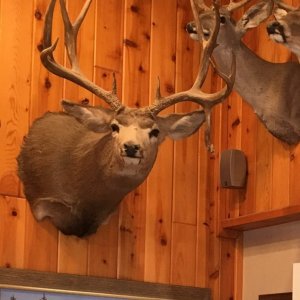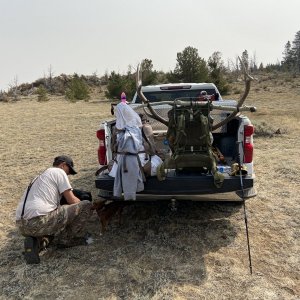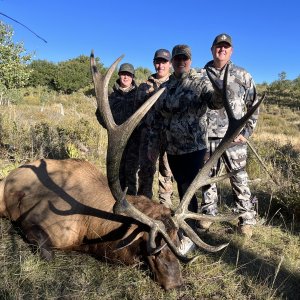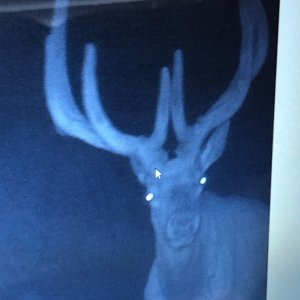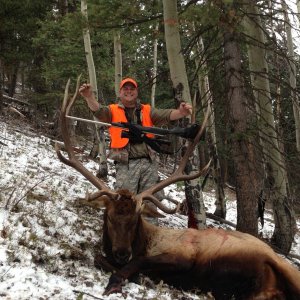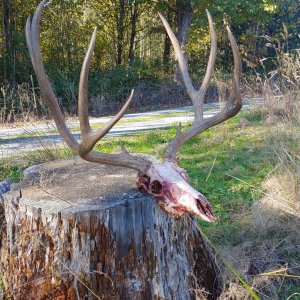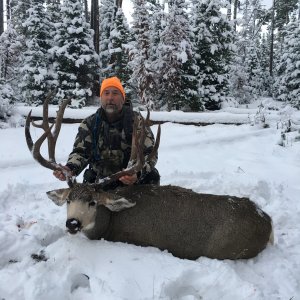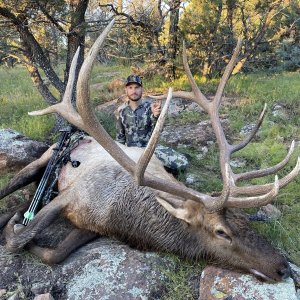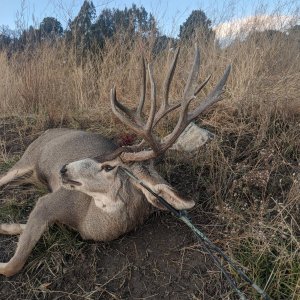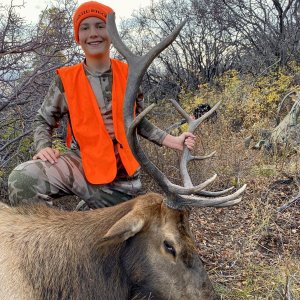Here's an article I wrote in 1988. It was prior to the release of the bison to roam as they wished throughout the area, including the park.
SHUFFLE OFF FOR BUFFALO
Copyright by Tony Mandile
Charles Jones roamed much of the West and Midwest during the late 1800s and the early 1900s. His earned the nickname "Buffalo" because of his skill at hunting the American bison during the time the big animals roamed the plains by the millions.
Although Jones isn't exactly a household name, his legacy to Arizona is still quite evident today. At the turn of the century, he decided to introduce elk and buffalo into Arizona, choosing the North Kaibab Plateau as the site for his experiment.
Jones planned to sell the hunting rights for both species. He also intended to crossbreed the bison with domestic cattle, winding up with a hybrid animal called either a cattalo or beefalo. Supposedly, these critters would provide the same benefits of beef cattle but would be much hardier, capable of living through weather and on land unsuited to domestic stock. Though the elk transplant never materialized, Jones did bring buffalo to Arizona.
Jones and his friend, lion hunter Jim Owens, had captured a herd of buffalo in the Texas panhandle in the 1880s and moved them to Kansas. Later, part of the herd wound up in Monterey, California. Jones transferred 35 from there by way of Lund, Utah to the North Kaibab in 1905. He brought another 87 from the Kansas herd to Arizona a year later.
Jones eventually became disenchanted with raising buffalo and rounded up as many as possible in 1909. He drove the buffs into Utah and sold them. Unknowingly, however, he left some strays behind. These became the property of the Grand Canyon Cattle Company, owned by none other than Jimmie Owens.
By 1927, when the state purchased the herd for $10,000, the stray buffs had increased to 98 animals. The herds inhabiting Houserock Valley and the Raymond Ranch, established in 1945, are the descendants of those.
According to the historians, the American bison might have existed in Arizona during prehistoric times. In contrast, estimates of their numbers living in the rest of the country during the 19th century often mention billions. In reality a truer estimate would be in the millions. When Lewis and Clark explored westward, they told of masses of buffalo, sometimes numbering more than 20,000 within sight of their wagons. The explorers also related how the huge herds darkened the Great Plains and seemingly made the land look like it was constantly moving. Other accounts tell of the concern the settlers had for their own safety as they occasionally used up several days moving their wagons through a single herd.
Before the white man began his move West, the buffalo's only enemy was the American Indian. For them, the big mammal meant survival. The meat from one could feed an entire village for days. The hides became clothing and shelter. Because the buffalo provided these basic necessities of life and were so numerous, the tribes depended on them. They followed a particular herd for months at a time and developed ways to harvest the beasts with the primitive weapons available to them.
Stampeding a herd to its death was a favorite technique. Indians on horseback drove the animals off a steep cliff or into dead-end canyons where they systematically dispatched them with spears or arrows. Some Indian hunters covered themselves with a buffalo hide and stalked into the herd or waited patiently for one to come to their imitation call of a calf in distress. Yet, while the Indians used the buffalo to survive, the white man was responsible for its downfall.
Expeditions, made up of hunters from eastern America and Europe, came out west with the express idea of slaughter in mind. To them, the final tally of dead bison on the ground was a sign of their success.
When train travel across the Great Plains later became a reality, the slaughter continued. While crews laid the tracks for the iron horses, hired buffalo hunters kept them supplied with meat. Usually, they removed only the choice parts and left the rest to rot or as food for scavengers.
Once completed, the railroads provided a new sport. Shooting the animals from a slow-moving train turned into the entertainment of choice for westward-bound passengers. Naturally, given the weapons of the day and inexperience of those shooting the large creatures, many buffalo died a lingering death after being wounded.
Finally, in the 1870s, a new boom helped put the American bison closer to extinction. With the advent of a revolutionary tanning process, the trade in buffalo hides expanded. The leather was far more durable than cowhide, and the grand buffalo population made it fairly easy to obtain. Both the white man and Indian quickly entered the hide-trading market. While the Indians continued to use the entire buffalo, the white hunters usually removed the hide and left the rest. Most were shipped off to Europe for tanning.
In 1884, congress finally passed legislation protecting the buffalo from further damage. Unfortunately, by then it was too late. The slaughter had taken its toll earlier. Already in 1883, few bison remained on the Great Plains. Some historians say the population in the U.S. had dropped below 800. Since than, the buffalo number has increased to about 30,000 in North America. Thanks to Charlie Jones, about 200 now live in Arizona.
The first state-authorized buffalo hunt occurred in 1927 at Houserock. The Arizona Game and Fish Department (AGFD), the new custodians for the animals, handed out 17 special permits and took the lucky hunters onto the buffalo range to kill an animal. Every year until 1961, the department allowed the state's sportsmen to cull the excess animals in this way.
Continued in Reply....



